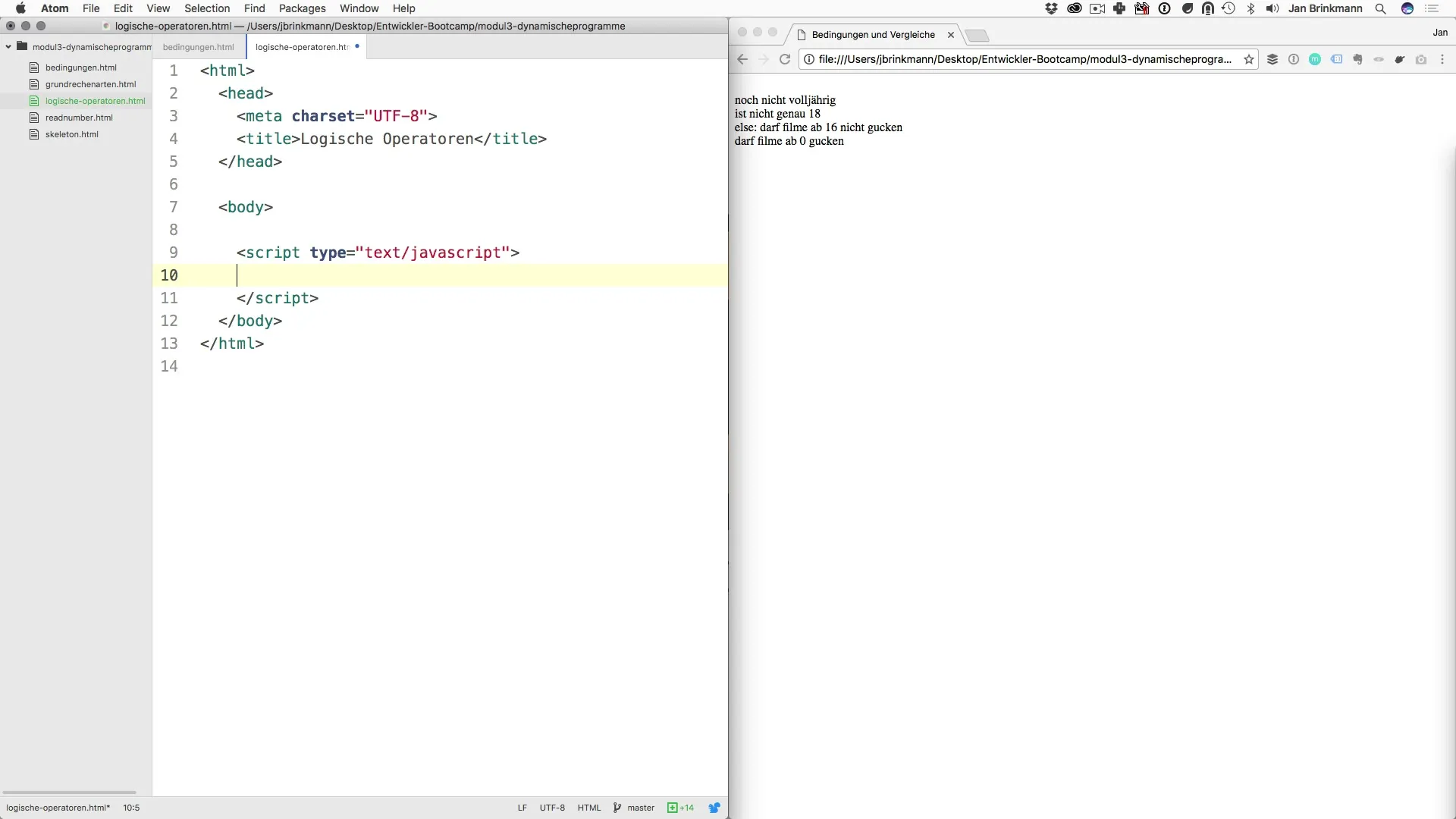Programming languages are full of interesting concepts, and one of the fundamentals is dealing with logical operators. They play a crucial role when you want to link conditions or trigger statements. In this guide, you will learn how to use logical operators to combine multiple conditions to arrive at comprehensive and effective solutions.
Key Insights
- Logical operators enable the linking of multiple conditions.
- There are three main types of logical operators: and, or, and not.
- Logical operators are essential for creating complex decision structures in programs.
The Basics of Logical Operators
Logical operators expand the ability to formulate conditions in programming languages. Fundamentally, there are the operators “and” (&&), “or” (||), and “not” (!). They allow you to integrate multifunctionality into your programs. Let’s go step by step through an application of these concepts.
Step 1: Establish the Basics
First, you will create two variables representing age and height. In our example, we set the age to 6 years and the height to 1.34 meters. This data forms the basis for the conditions we want to establish in our program.

Step 2: Create Conditional Statements
In an amusement park, for example, you would like to determine if a child is allowed to ride a roller coaster. The minimum requirements could be that the child is at least 6 years old and 1.40 meters tall. You structure your program with an “if statement” that checks if both conditions are met.
Step 3: Using the Logical “and” (&&)
Here, you link the two conditions with the logical “and” operator.
If one of the conditions is missing, the result will not be output, and you can provide the user with appropriate feedback.
Step 4: Working with the Logical “or” (||)
Now we take a step further and use the logical “or” operator. In some cases, it may be useful to grant access if at least one condition is met. Here is an example where it is sufficient to either meet the minimum age or the required height.
Step 5: The Logical “not” (!)
The “not” operator is useful for negating conditions. For example, if you want to ensure that a condition is not met, you can elegantly implement this with the negative operator.
Here it checks if the age is less than 6. If not, the text is output.
Step 6: Combining Logical Expressions
Sometimes it is necessary to combine multiple conditions.
Summary - Logical Operators: Decision Making in Programming
In this guide, you learned how to use logical operators to link conditions in your program. You have become familiar with the main types – “and,” “or,” and “not” – as well as practical examples that should help you better understand the logic behind the conditions. Now experiment with these concepts in your own projects!
Frequently Asked Questions
What are logical operators?Logical operators are symbols that help check and connect multiple conditions.
How many logical operators are there?There are three main types: “and,” “or,” and “not.”
When is the logical “and” used?The logical “and” is used when all conditions must be met.
When is the logical “or” used?The logical “or” is used when at least one of the conditions must be met.
What does the logical “not” operator do?The logical “not” operator negates the truth value of a condition.


